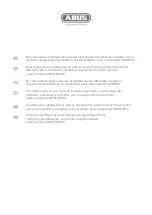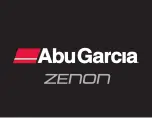
46
4 – EMX BOARD OPERATIONS AND EMX APPLICATIONS
his chapter covers EMX Surface operations from the board
operator perspective. Included is an overview of the control
panels’ features and functions; how to use the EMX to
accomplish specific tasks and functions; how to use the
Advanced Channel Features; and how to use the Razor I/O
Interface’s front panel control and display.
EMX CONSOLE OPERATION
EMX operation is identical, regardless of which size EMX Surface is being
used—only the number of fader channels available and the number of
optional control panels installed in the Surface will differ. Figure 4-1 is an
overview of an EMX-16 Surface listing its main component parts.
Figure 4-1 EMX Surface Overview
One fader channel strip is shown in Figure 4-2 with a summary of the
controls and channel display. A Monitor Control panel overview is shown in
Figure 4-7 on page 50. The first mention of each control is in Bold in the
text.
Fader Channel
Operation
There are four identical fader
channel strips on each Quad
Fader panel. Each fader channel
typically has an audio source
assigned to it. The channel
sources may be manually taken,
using the Channel Encoder,
the large knob at the top of
each fader channel, or by
pressing a Soft Button which
has been pre-set to take that
channel’s “Hot Source.”
Sources can automatically be
taken on multiple channels by
taking a console Event or by
taking a console Salvo that’s
assigned to one of the Spare
buttons on the Monitor Control
panel.
The channel’s current source
is shown in green in the middle
of the Channel Display (detail
in Figure 4-3 on page 47, left
channel display). If no source is
assigned the channel display
shows NoSource.
Most fader channels have
alternate sources available
which can be “dialed up and
taken” by the board operator
using the channel encoder. The
alternate source names are listed
in alphanumeric order as the
channel encoder is rotated.
Note: The list of alternate source names is not under board
operator control. The lists were set during console configuration,
but can easily be updated as required by engineering.
Selecting an alternate channel source can only be done when the
channel is off. If the channel encoder is rotated while the channel is on, a
FADER ON message appears in the channel display. With the channel off,
rotate the channel encoder. The channel display switches to show three
source names with the currently selected source shown highlighted (Figure
4-3, right channel display). Rotating the encoder Clockwise (CW) moves
T
Figure 4-2 Channel Controls
Summary of Contents for EMX
Page 4: ...4 ...
















































